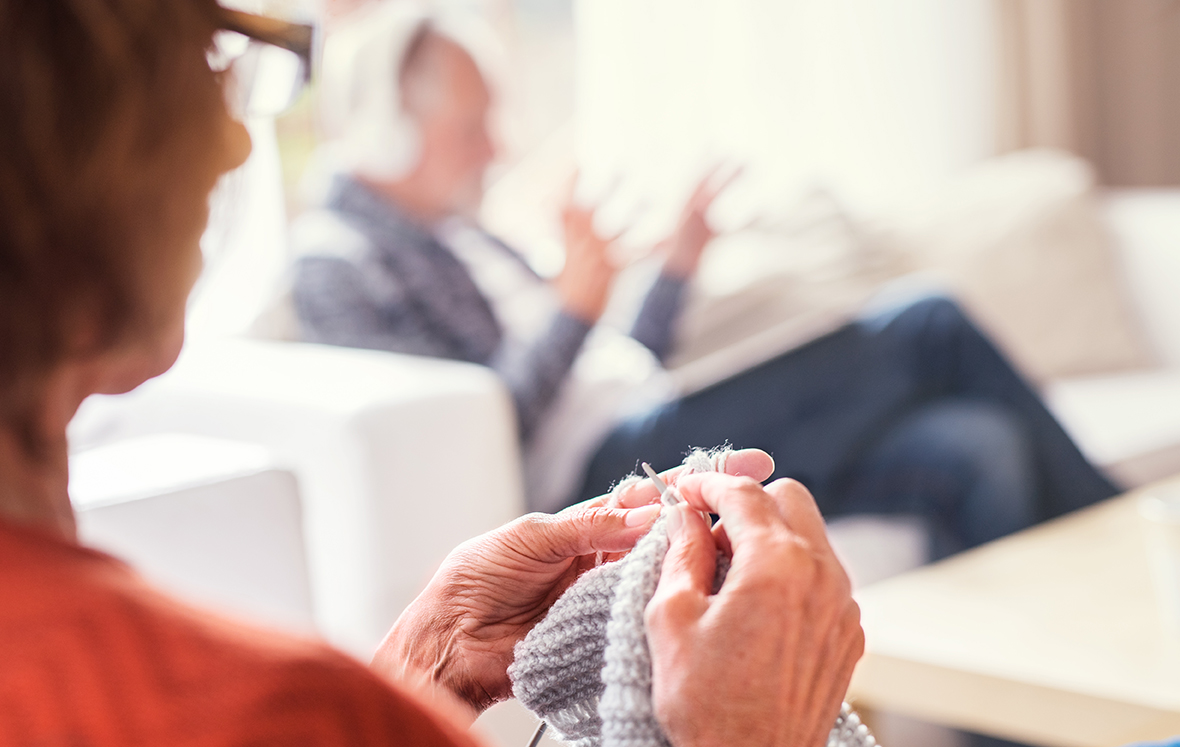Research and lived experience show that music helps reduce the often-distressing symptoms of dementia, such as agitation, apathy and anxiety. When music is personalised, it can enliven, stimulate and enable people to express themselves creatively beyond words.
Music and the brain
There was a significant leap in our understanding around music and the brain in the early nineties with the advent of brain imaging. We’ve learnt that we process music across the whole brain and not just in one region. People with dementia are often still able to engage in music because there are areas of the brain unaffected by the disease that can continue processing music.
We process music in many ways – cognitively, emotionally, physiologically and socially. Multiple regions of the brain fire upon hearing music: muscular, auditory, visual and linguistic. This is why when verbal language skills have declined, it is still possible to sing words or lyrics from a song because a different part of the brain is being used because you’re recalling them through music.
Music to enhance connections
Music is a wonderful tool in making connections, both with the past and with other people if participating in a shared music experience. Studies have found people with dementia are more likely to engage with others when music is played, often in the form of sharing memories and anecdotes.
Engaging in musical activities, particularly with others, helps reduce social isolation and enables us to see a person for who they are, beyond their age and their diagnosis.
Tips on engaging with music
There are many ways in which you, or someone you care for, can enjoy music and keep it going as a core part of daily life. How we experience music is as important as the actual music we enjoy. Some examples are:
- Listening on your own or with others to your favourite songs
- Singing along to familiar tunes
- Dancing, swaying or tapping to music
- Attending a concert or other musical event
- Watching a musical film or recording of an opera
- Playing a musical instrument on your own or as part of a group
- Singing in a choir.
Making a playlist is a great way to ensure the music played is personal and meaningful. Research has shown that we have a ‘memory bump’ of music that we listened to in our mid-teens to late 20s, so this is a good starting point. The resulting list may be music that was popular at the time, however it may also be music that was played in the family home by parents or siblings, or music that was learned through playing an instrument.
Things to remember:
- Where possible, listen to music together with others and share the memories and enjoyment
- Play music at appropriate times in the day, not as ‘always on’ background noise that can be irritating
- Make sure the volume is correct for the person/people listening
- If using headphones, check to ensure they are fitted comfortably and are easy to remove if needed.
Music Programs
Hammond Care have an Arts on Prescription program where experienced artists work with small groups to help participants create and learn new skills, while focusing on specific health and wellness needs.
You can participate in an international research study about home-based music and reading for people living with dementia and their carers via Homeside.
For programs via aged and health care service providers, including Help at Home providers, visit Music and Memory who certify services across 11 countries to provide a personalised music playlist program.
Find out more via Music For Dementia
For more information, visit the Music For Dementia UK website.
For more information on this website
- Options to help keep you socially and mentally active online (including online singing options)
- Be socially active
- Join a group to be more socially active
- Art and people living with dementia





